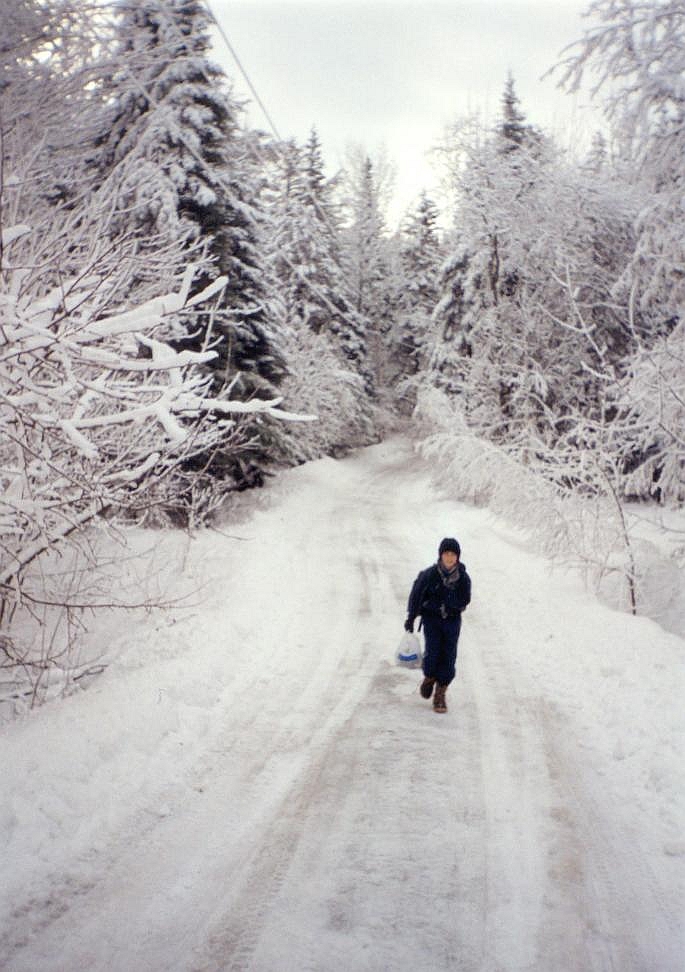One December afternoon when we first lived in Troy, which was some time ago, my son, Jack, and I went into the woods to cut a Christmas tree. He was old enough by then to navigate the snow the same way I did when I was a boy hunting blue spruces, which are pretty elusive in southern Maine.
We hiked up the hill behind the house through floating snowflakes with an ax and great expectations. We examined small hemlocks, pines and ragged black spruces. Some white spruces were the right height and had fuller needles, tempting us to cut. But it is called skunk pine for a reason. We saw a lot of sparsely equipped young firs.
As our boots crunched more and more snow, I remember thinking that in my boyhood, I felt like the woods had the reverent air of a cathedral. How at Christmastime the church pageant, colored lights and the likelihood of Santa angling his sleigh down through the treetops in the middle of the night blazed in my mind. The balsams and spruces were like a place where houses are all churches and have spires.
Commercially it is called “magic,” although there are better words for the depths that underlie advertising. Christmastime is even older than Christ.
For Christ, the scholars tell us, was probably born in the spring, not December. And long before his time, rituals of rebirth and renewal were celebrated at the winter solstice, the day in late December when the noon sun finally reaches its lowest point and begins its reascent.
To ancient people, this was a powerful, cosmic moment. The sky and its workings were expressions of activity in the divine world, and the motion of the sun lowering in the sky from June to December, and then rising from December to June, was seen as a living, awesome sign of the powers that drive the universe. People reverenced the sun’s rebirth and used evergreens as ritual symbols because their needles, like the sun, survive and live again.
The profundity of this is hard to grasp here in the scientific age. As far as we know, we have outgrown childish superstitions about supernatural powers and our wise elders understand that physics and biochemistry explain virtually everything.
As it happens, the pagan reverence of the solstice never really disappeared. During the 300s A.D., the emperor Constantine and the church fathers linked the renewal celebrations to Christ by appointing Dec. 25 as his birthday. Christ, after all, is the personification of rebirth. Here in the 21st century, we still use evergreens to remind ourselves that something awesome is happening just the other side of the sun.
On our tree hunt in the back woods, I was hoping Jack would catch the drift of all this. But he was getting tired, so we cut the fullest-branched fir we could find and dragged it home in the snow.
Things are almost always larger in imagination than in the living room. The tree turned out to be a scraggly, Charlie Brown-style skeleton. We hung our ornaments and lights on it anyway, much to the shock of a delivery man who caught a glimpse of it, dropped his jaw, and scrammed to his truck.
Still, following in the footsteps of his wandering dad, Jack tells me he remembers that expedition. Here and now, the Christmas woods remain more real in his mind than all the scientifically grown and nurtured trees we have bought since.
Dana Wilde lives in Troy. You can contact him at naturalist1@dwildepress.net. His recent book is “Summer to Fall: Notes and Numina from the Maine Woods,” available from North Country Press. Backyard Naturalist appears the second and fourth Thursdays each month.
Send questions/comments to the editors.



Comments are no longer available on this story